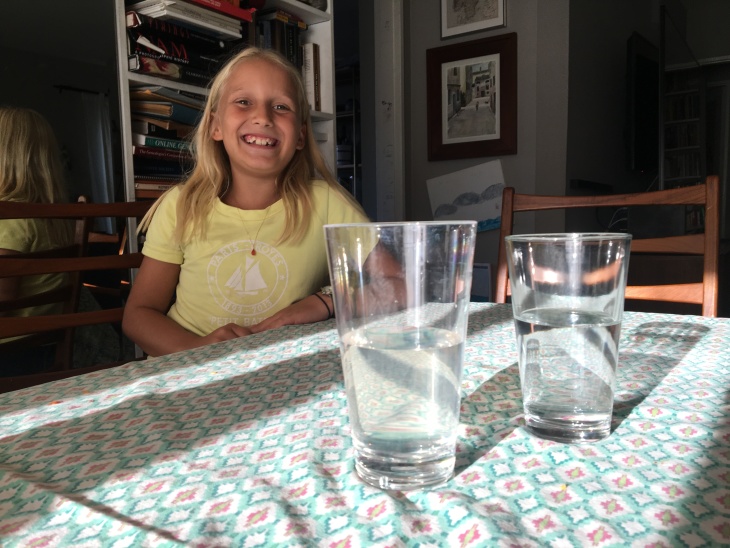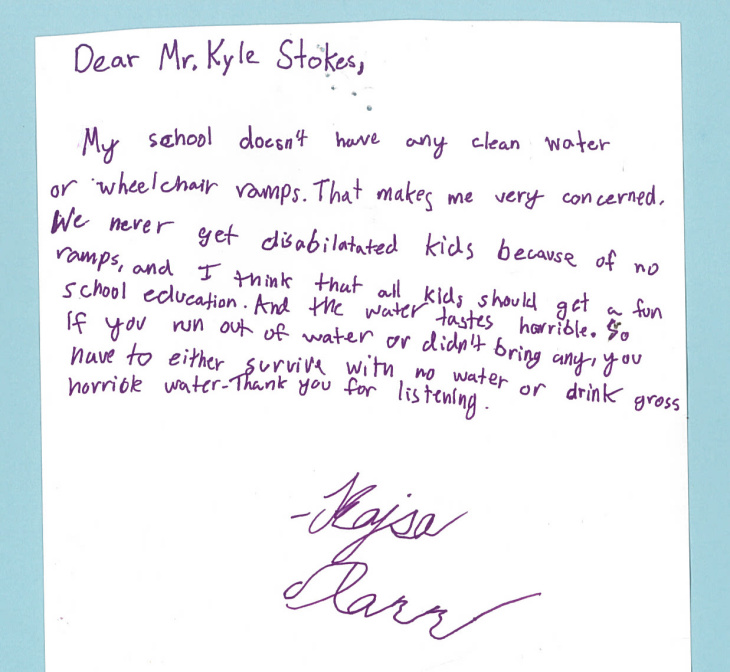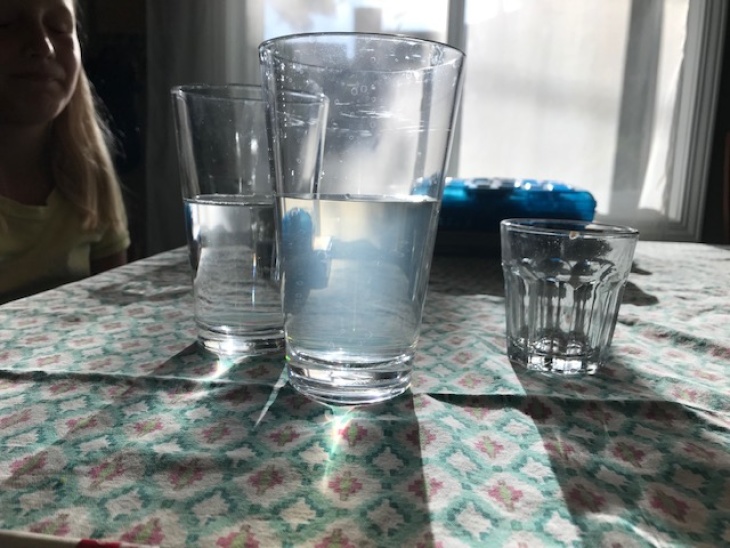
Back in July, fourth grader Kajsa Darr sent me a letter with a complaint that would get any reporter’s attention.
“Dear Mr. Kyle Stokes,” she wrote in purple pen-strokes, “my school doesn’t have any clean water. “
Kajsa explained the water at Clifford Street Elementary – a Los Angeles Unified school in Echo Park – “tastes horrible.”
“If you run out of water or you didn’t bring any,” her letter concluded, “you have to either survive with no water or drink gross horrible water. “

Of course, complaints about water quality are serious business. Think:lead in the water in Flint, Michigan.
But long before Flint’s crisis was making headlines, the L.A. Unified School District has been taking steps to make sure water on its campuses is safe to drink. Since 2008, LAUSD has spent $ 30 million – and will soon spend $ 15 million more – to test its 60, 000 drinking fountains for lead and replace, shut off or install filters on compromised water outlets.
Which means Kajsa’s letter caught my attention for another reason: after all that testing and all those upgrades, how could something possibly have gone wrong with the water at Kajsa’s school? I decided to investigate.
‘SIZZLING,’ DIRTY-LOOKING WATER
The first step: meet Kajsa for a taste test.
“It tastes like chlorine mixed with metal,” Kajsa explained as I (reluctantly) sipped some of Clifford’s water, which she’d brought to our August interview in a thermos. Indeed, there was a subtle, but definitely metallic, aftertaste to the water.
And not only did the waterTastefunny. “It looks dirtier than other water,” she said. I agreed – especially when held up to the sunlight, Clifford’s water looked faintly yellow and slightly cloudy.
We were speaking at her Silver Lake home, but Kajsa said to get the full effect, you really have to visit the school: the main drinking fountain is outside, and the faucet is almost always in the sun, meaning the water is almost always “sizzling” – Kajsa’s word, not mine.
Thankfully, while the water seemed unpleasant, it did not seem unsafe to drink – at least, that’s what I thought . Our taste test complete, it was time to alert higher authorities, hoping they would confirm my hunch.

THE RESULTS COME IN
I forwarded Kajsa’s letter to LAUSD officials, and it quickly made its way to the desks of two top LAUSD officials: chief facilities executive Mark Hovatter and Carlos Torres, who runs the district’s Office of Environmental Health and Safety.
The district appears to have taken Kajsa’s complaint seriously. Torres says crews visited Clifford Elementary’s campus twice and, in September, called in the utility that supplies the school’s water: the L.A. Department of Water and Power.
They, too, found the water was slightly discolored – at least at first.
The water “was yellow initially,” Torres said, “and then after probably less than 30 seconds, it ran clear. “
LADWP also ran laboratory tests on Clifford’s water. Their conclusions were mostly good news.
The yellowish tinge was likely from iron rust in the water – which, while sometimes unpleasant to taste, is considered harmless . LADWP water quality inspector Koon Lui also determined the slight cloudiness in the water came from “dissolved air” in the water – also harmless.
“Both the discoloration and the cloudiness,” Lui wrote, “are common problems that occur with construction activity.” (Sure enough, condos are being built nearby.)
WHAT’S THE SOLUTION? (IS THERE A SOLUTION?)
I followed up with Kajsa to tell her that the tests found no health risks in her school’s water.
“Really?” she said. “Yay!”
Kajsa was also fine with LAUSD’s suggested solution to the taste and smell problems: simply run the water for a few seconds before drinking.
“I feel like it’s teaching kids to become more responsible,” she said.
Still, I wondered if LAUSD could do something more at Clifford – like maybe install some kind of water filter.
Hovatter said that idea has drawbacks. Filters only work well if they’re replaced regularly, which gets expensive. Filters also extract some helpful chemicals from the water, such as the fluoride added to improve kids’ dental health.
But Hovatter added that LA’s municipal water is generally pretty clean and worries that installing filters sends the wrong message: that children – or their parents – should only drink tap water if it comes through a filter first.
“So I’ve committed to only putting in filters where we need to,” Hovatter explained.
“And we would ask our students,” he added, “to be as diligent as this student [Kajsa!] was … because if we let the water run for a couple minutes and it’s still coming out yellow, then there’s a major problem and we have to go take care of it. “
LAUSD’s primary use for water filters is as a tool for mitigating lead levels. In total, the district has installed 3, 568 lead filters at all of the district’s Early Education Centers, plus at campuses where “installing a filter was the only lead mitigation measure that would work,” according to spokeswoman Elvia Perez Cano.
A CAVEAT: LEAD LEVELS
On that note, it’s important to mention that LADWP’s tests at Kajsa’s school did not look for lead levels.
However, in 2016 tests conducted by the district,all but one of Clifford Elementary’s water fixturesregistered below the US Food and Drug Administration’s limit for lead in bottled water – five parts per billion. (That’s good.)
But across LAUSD’s campuses, lead levels in a quarter of school water fountains tested above that bottled water threshold,according to a 2018 analysis by the news siteEdSource.
The district isn’t legally required to take action on fountains tested below 15 parts per billion of lead, the federal Environmental Protection Agency’s “action limit” for tap water. (Pediatricians fear no amount of lead in the water is safe.)
But under the latest phase of LAUSD’s water quality push, Hovatter says district crews will order a fresh round of lead testing and shut off any water fountains that are not below the 15 parts per billion threshold.
In April, school board members approved $ 15 million that will pay for the lead testing, the installation of more water-bottle filling stations and other efforts to bring many, but probably not all, LAUSD drinking fountains and faucets down to the bottled water standard for lead content – five parts per billion.
“We think,” said Hovatter, “we’ve got some of the safest drinking water of any school in the country. “
- MORE: How much lead is in the drinking water of your LAUSD school?Search for your school amongthe district’s latest test results. Click on “Search by School.”
MORE LETTERS !!
So how’s the water at your school?I want to hear about it!
And do you have any other questions about education you want KPCC to explore? Ask them here:






GIPHY App Key not set. Please check settings